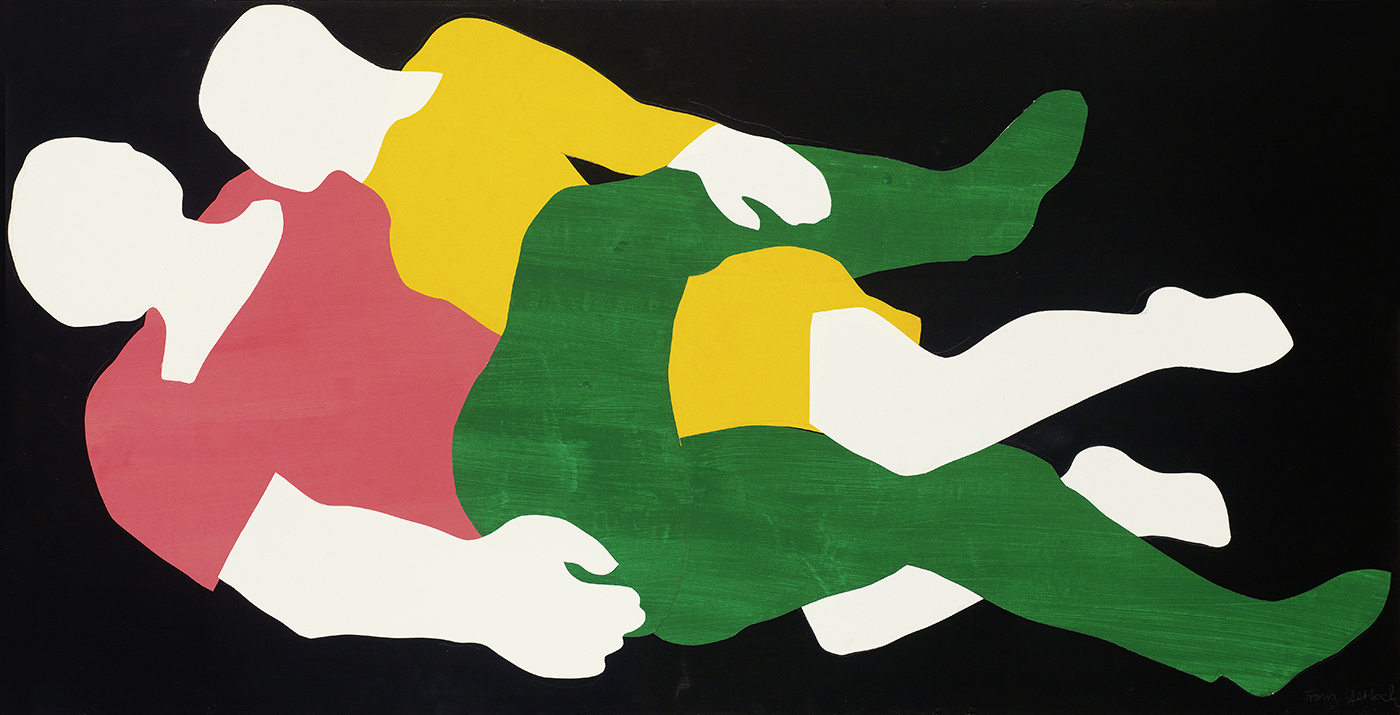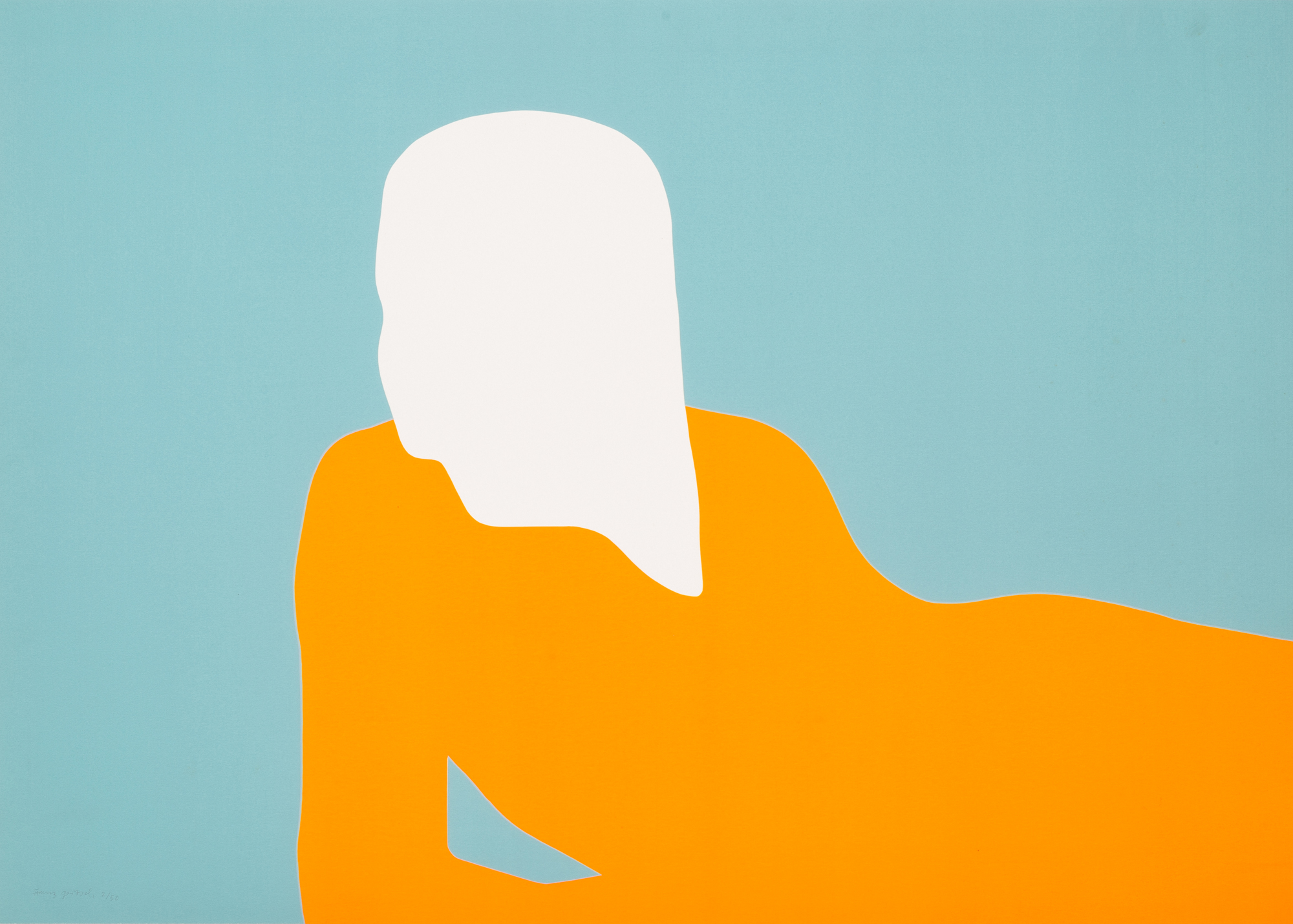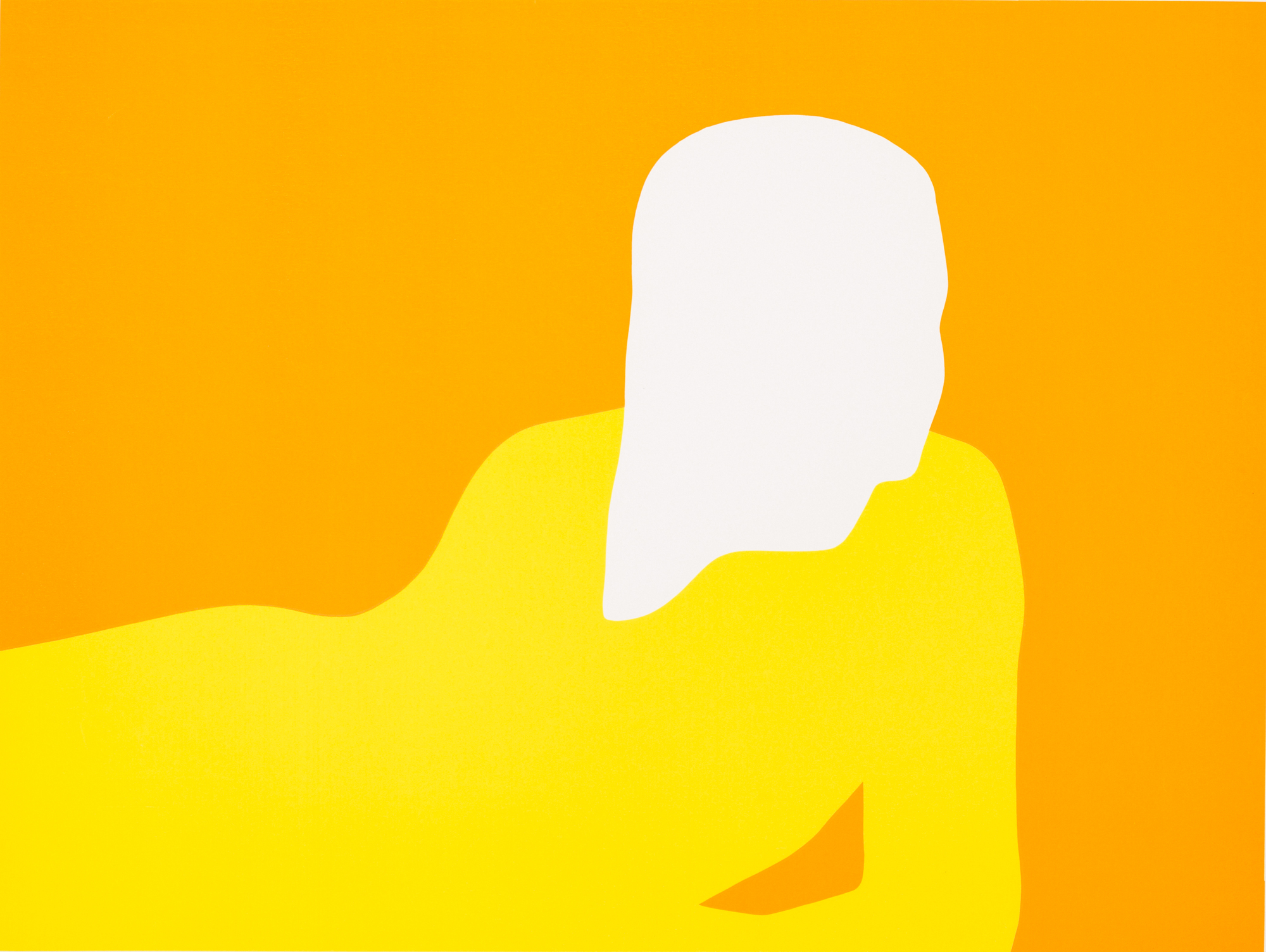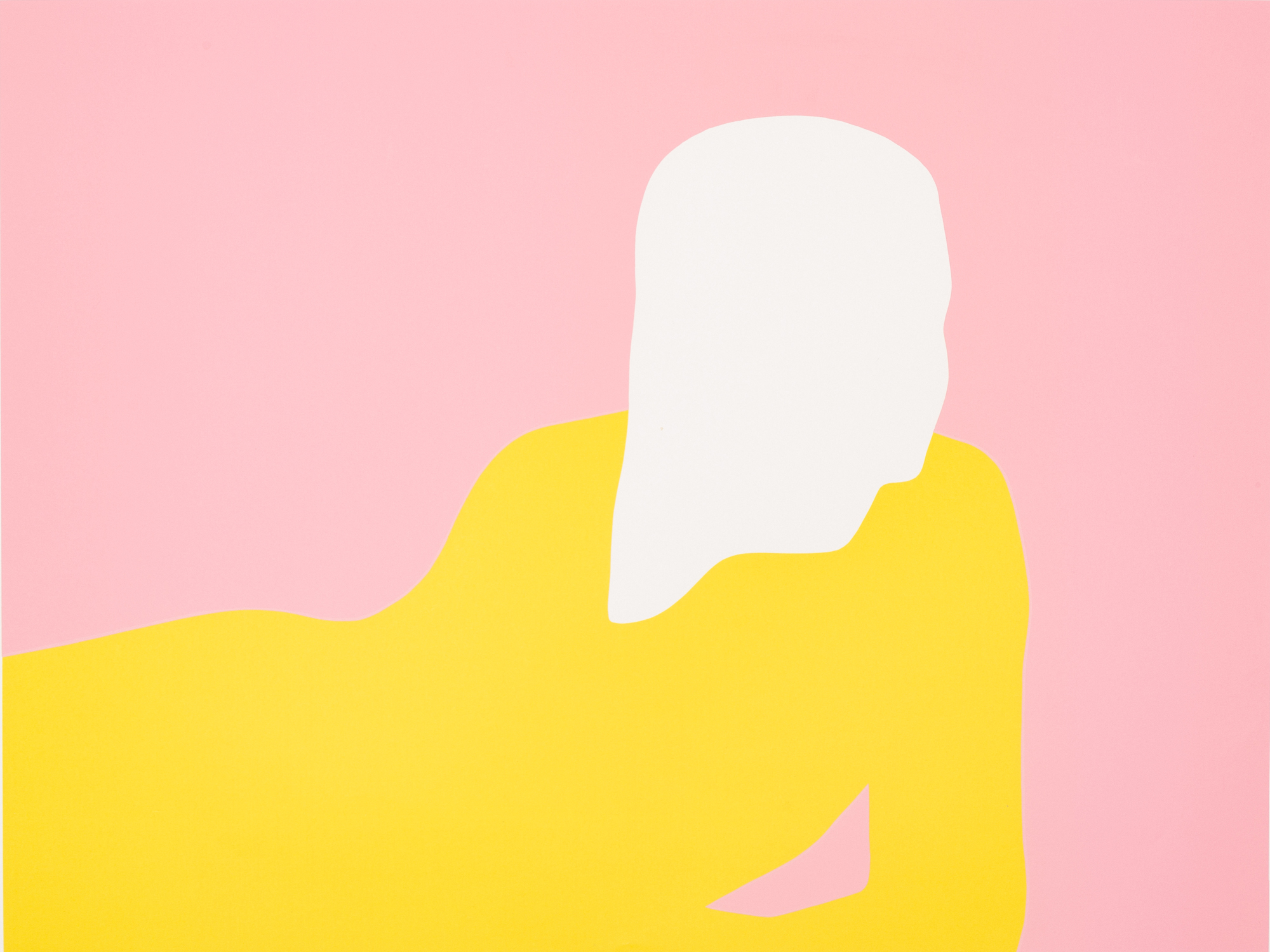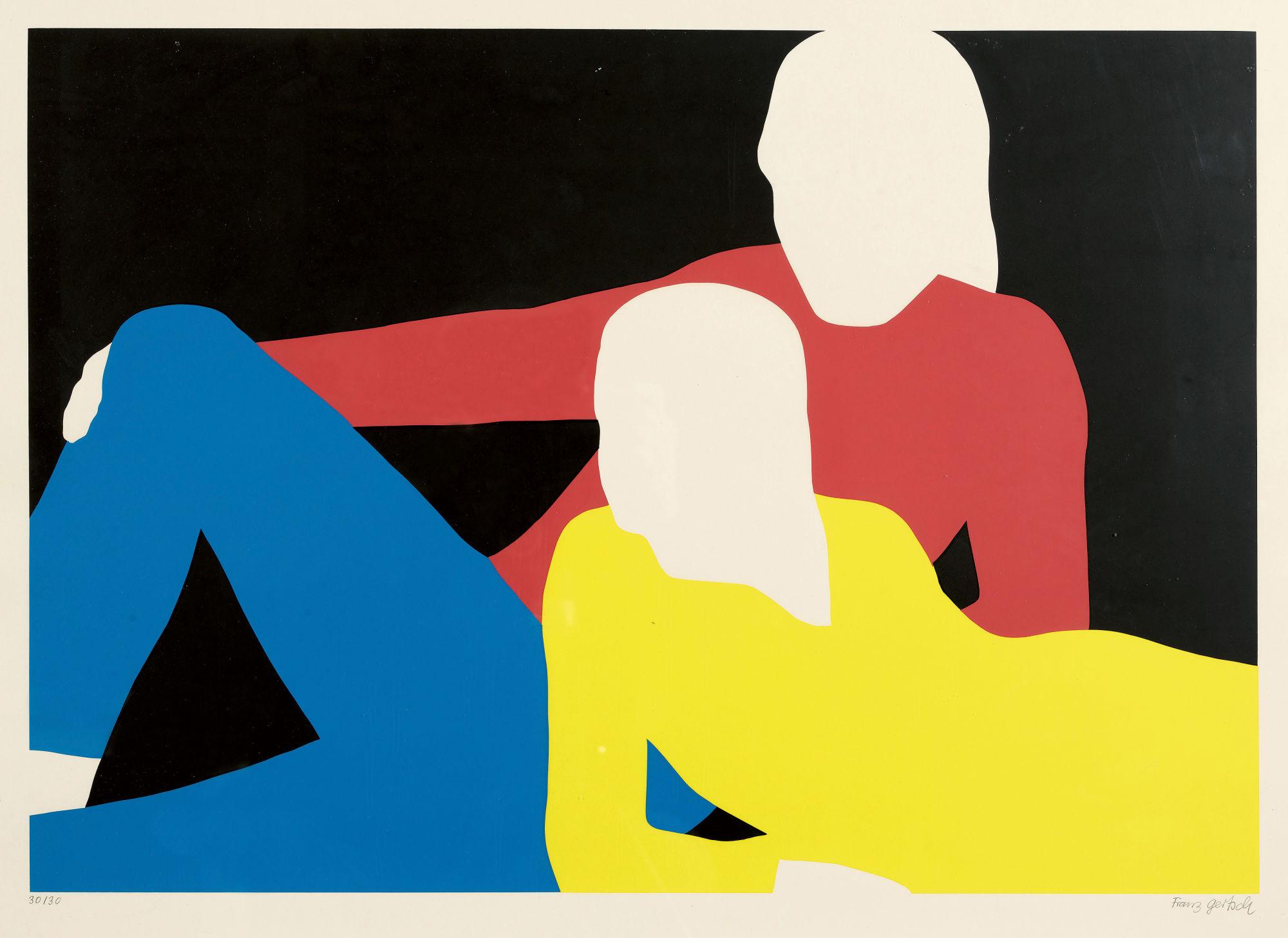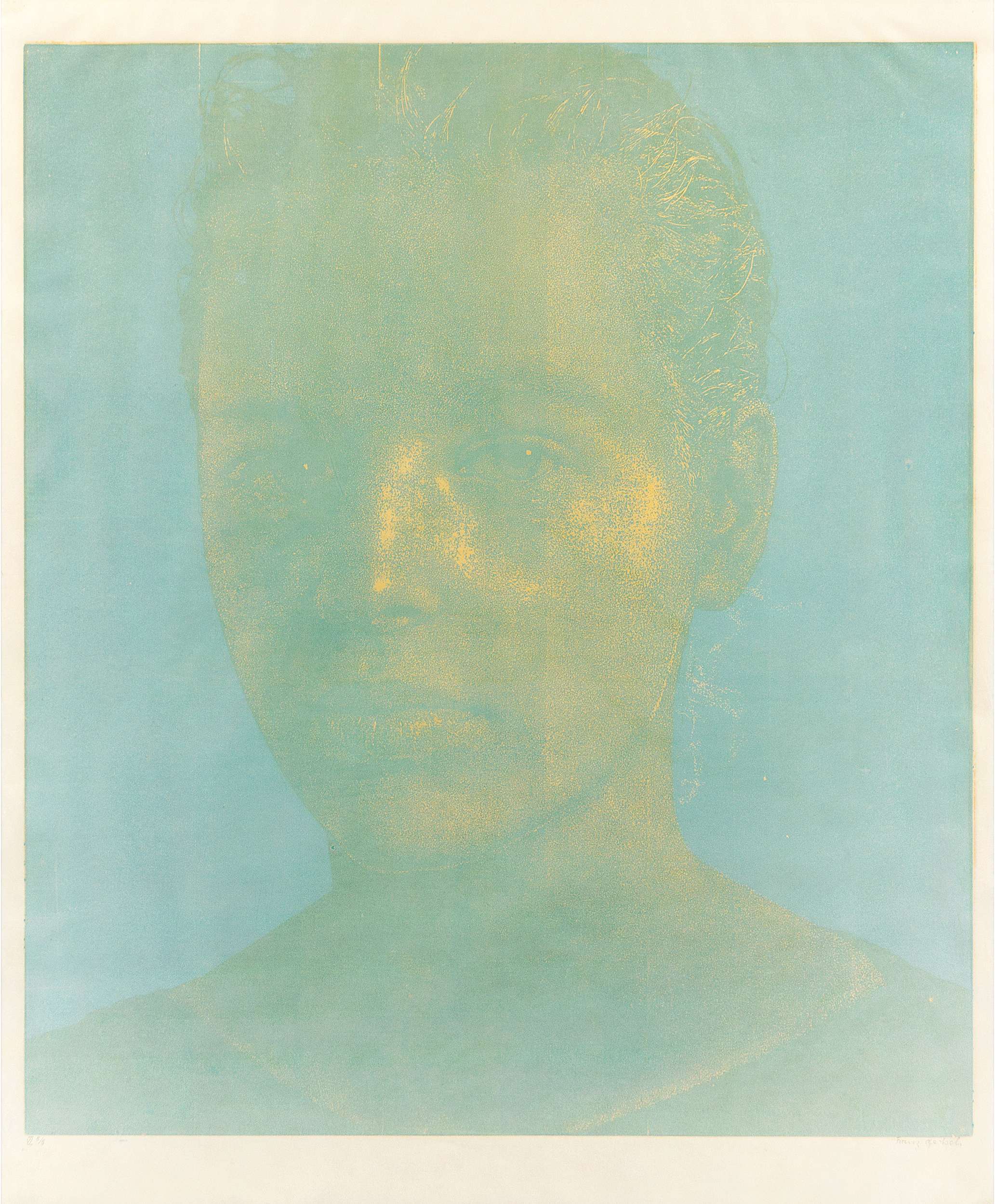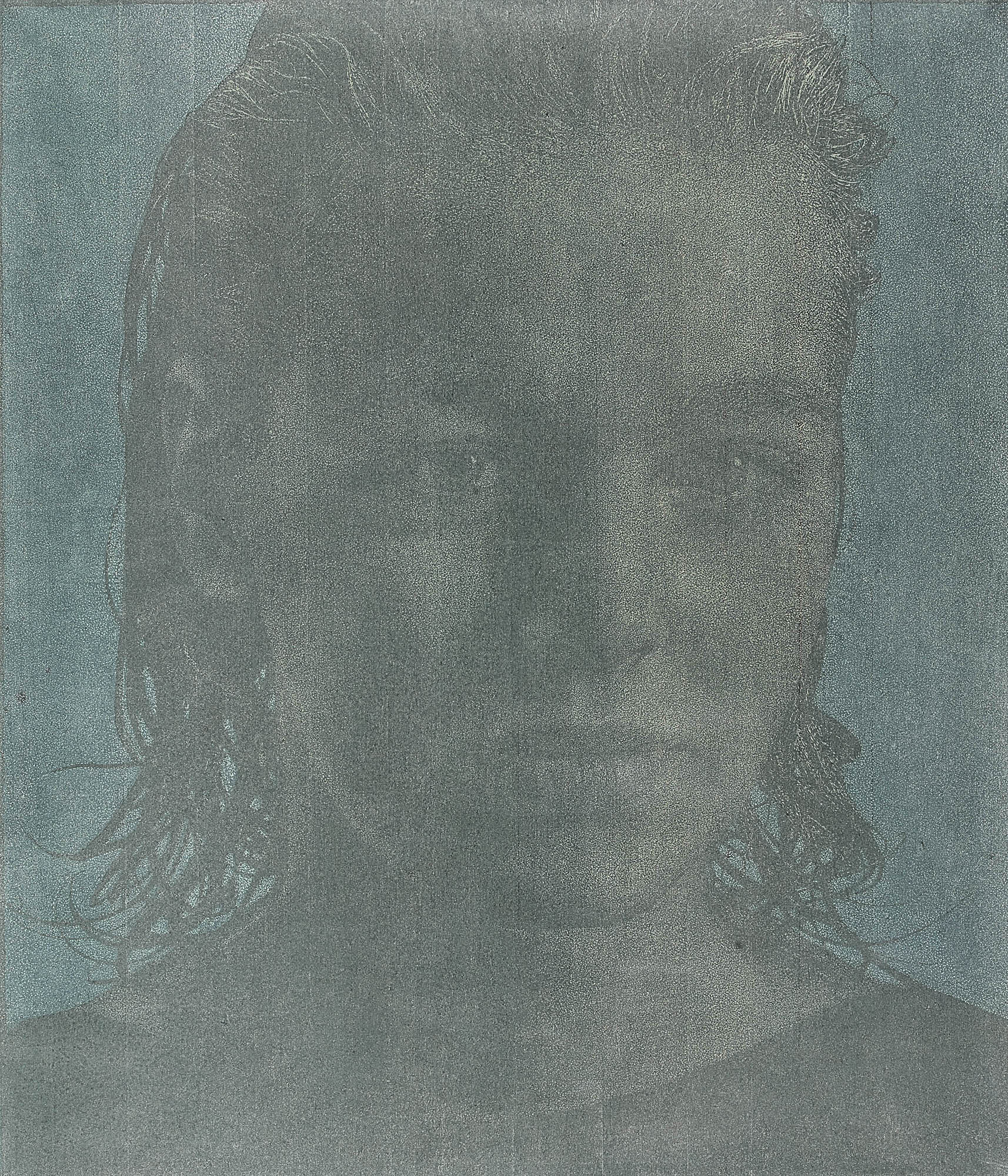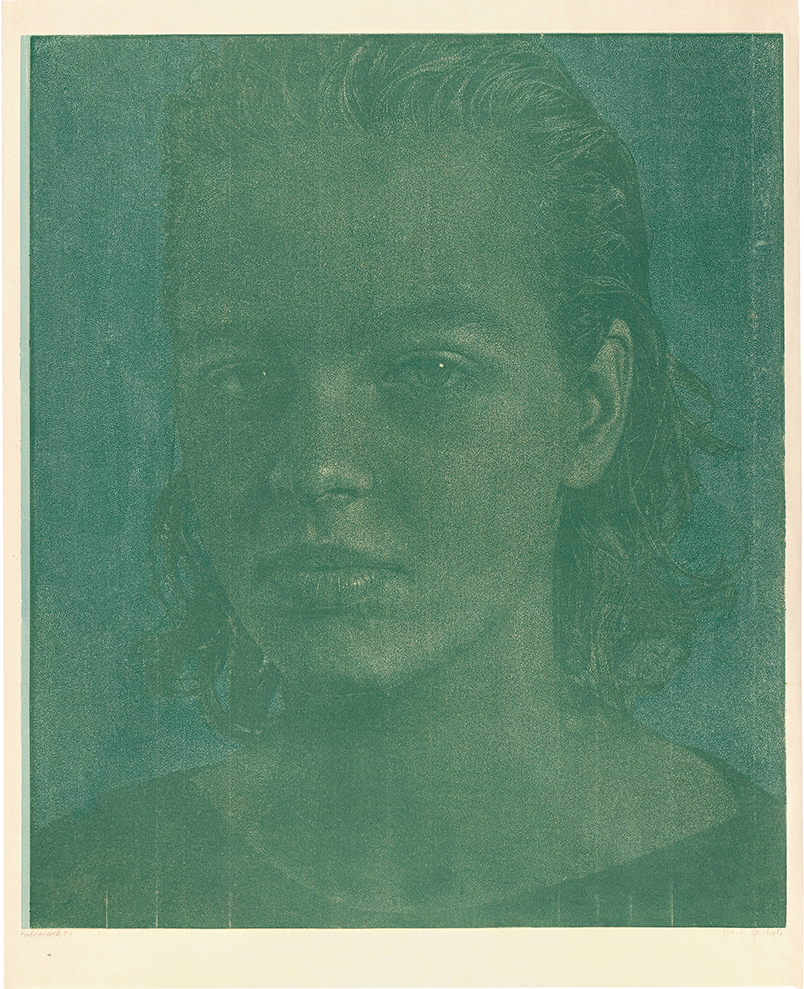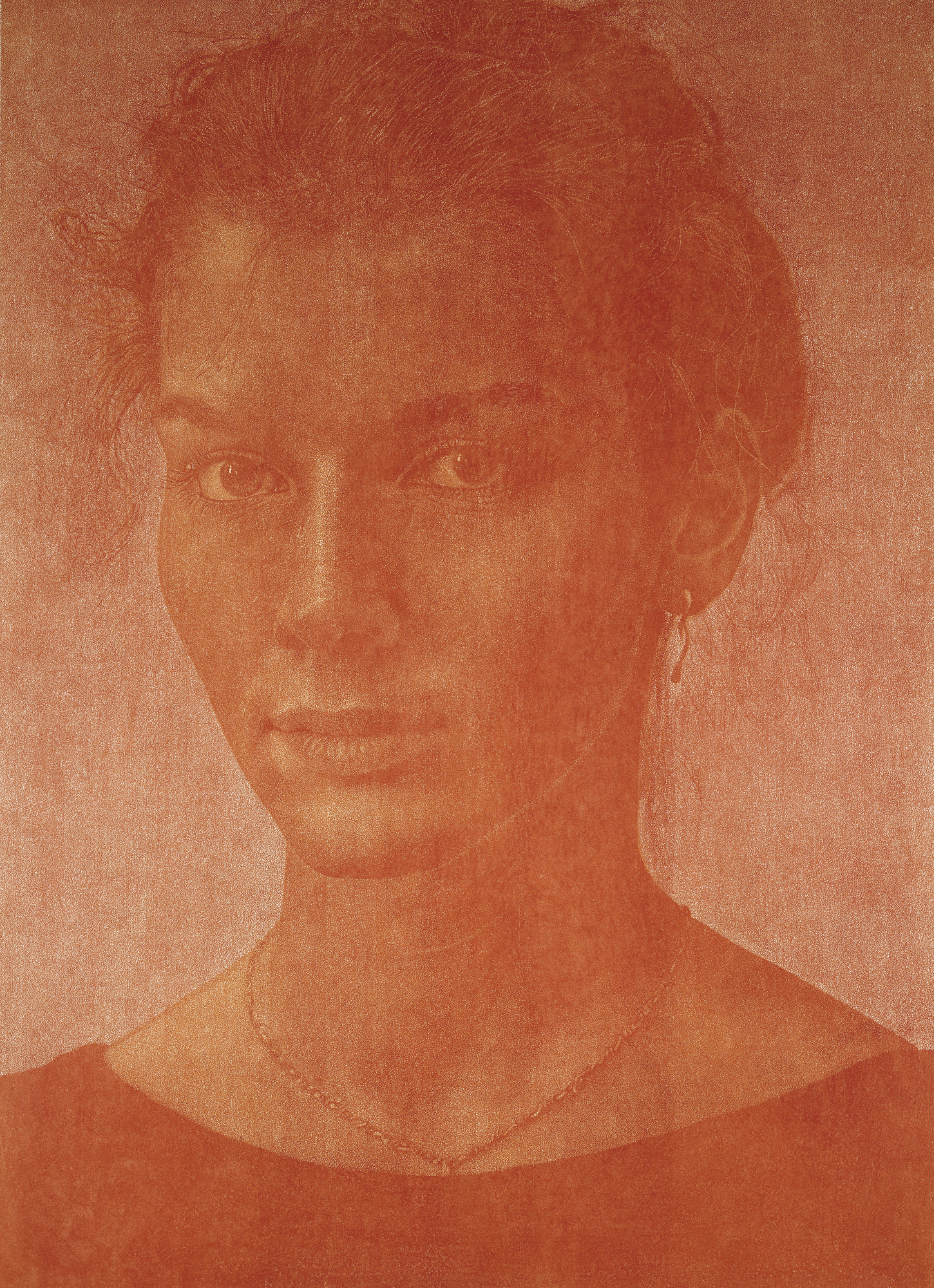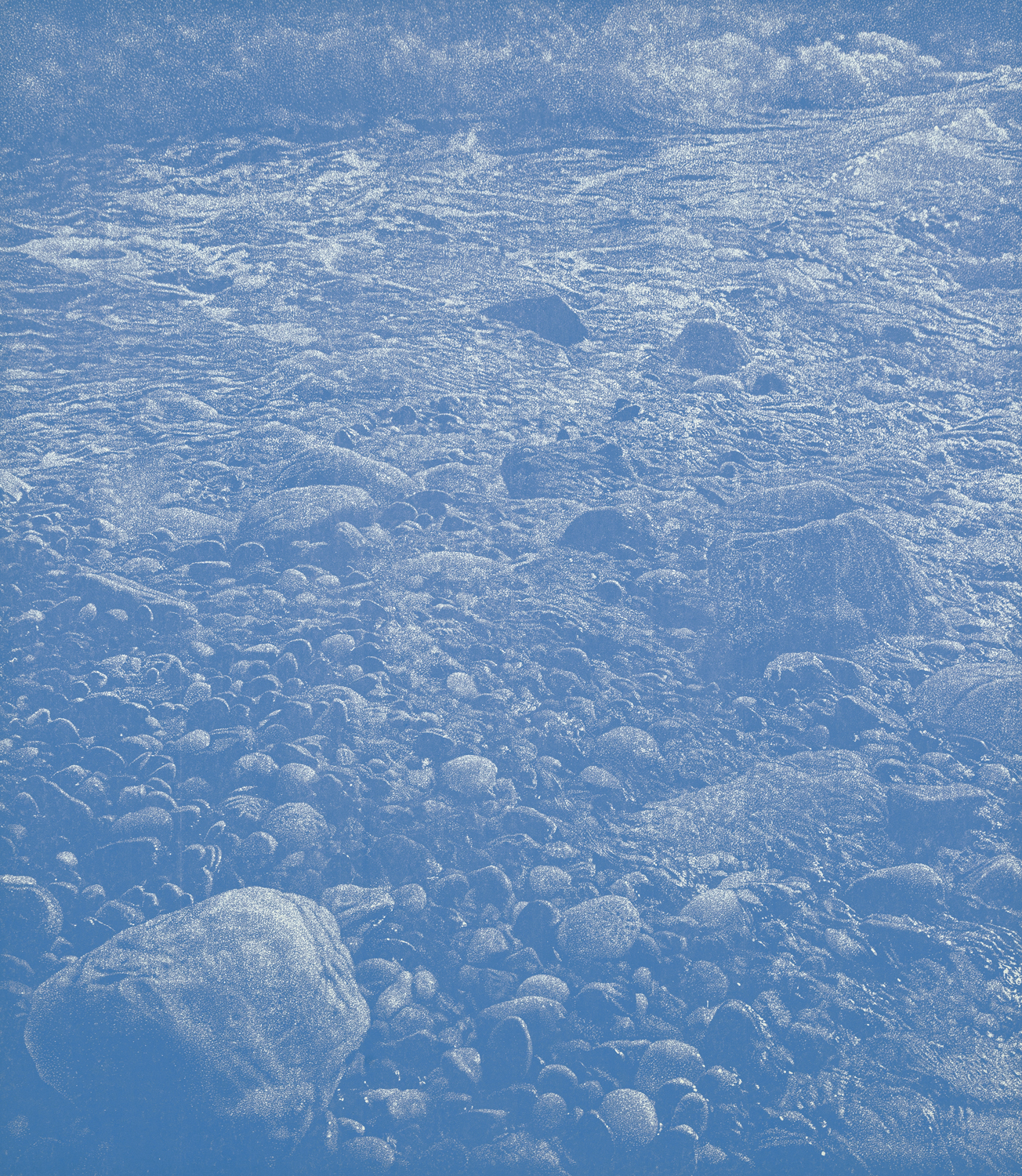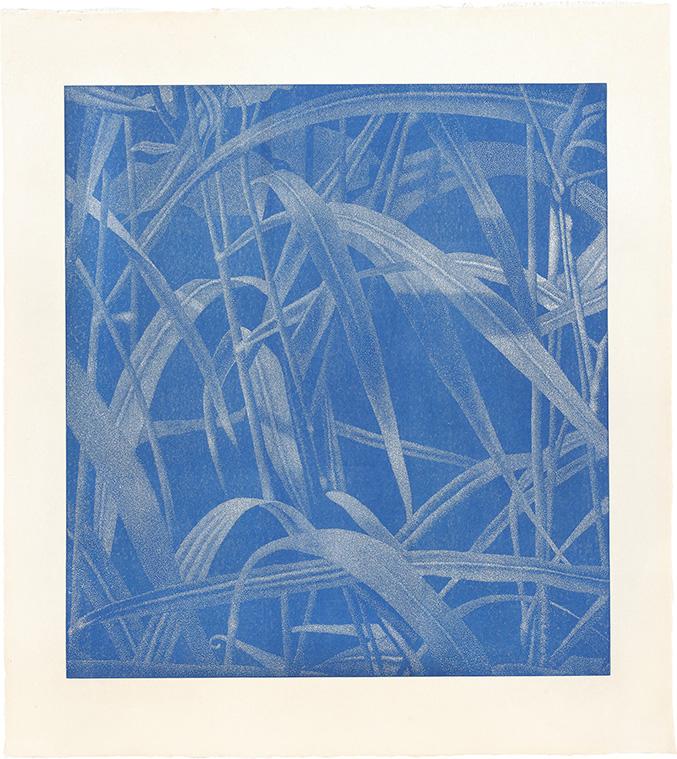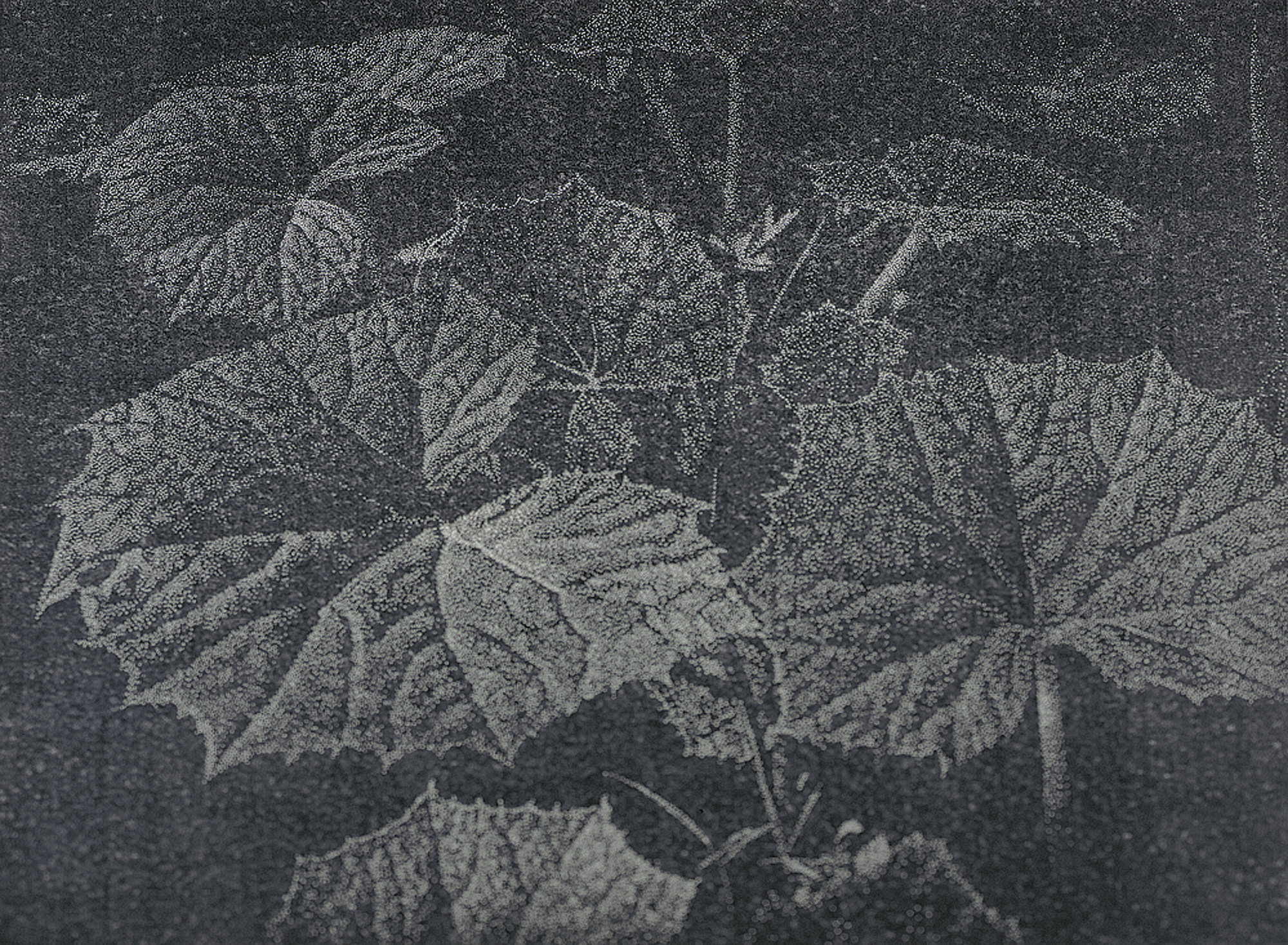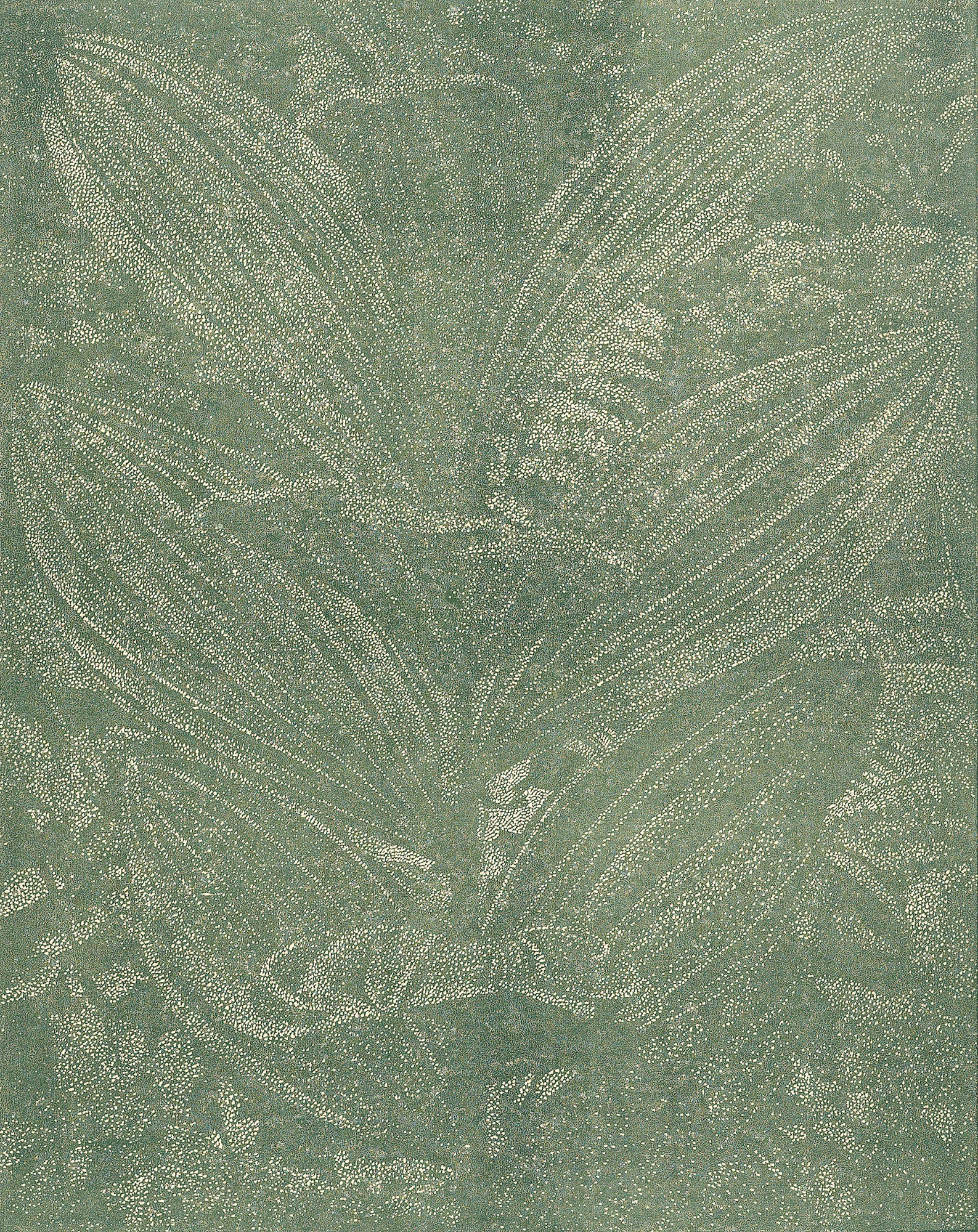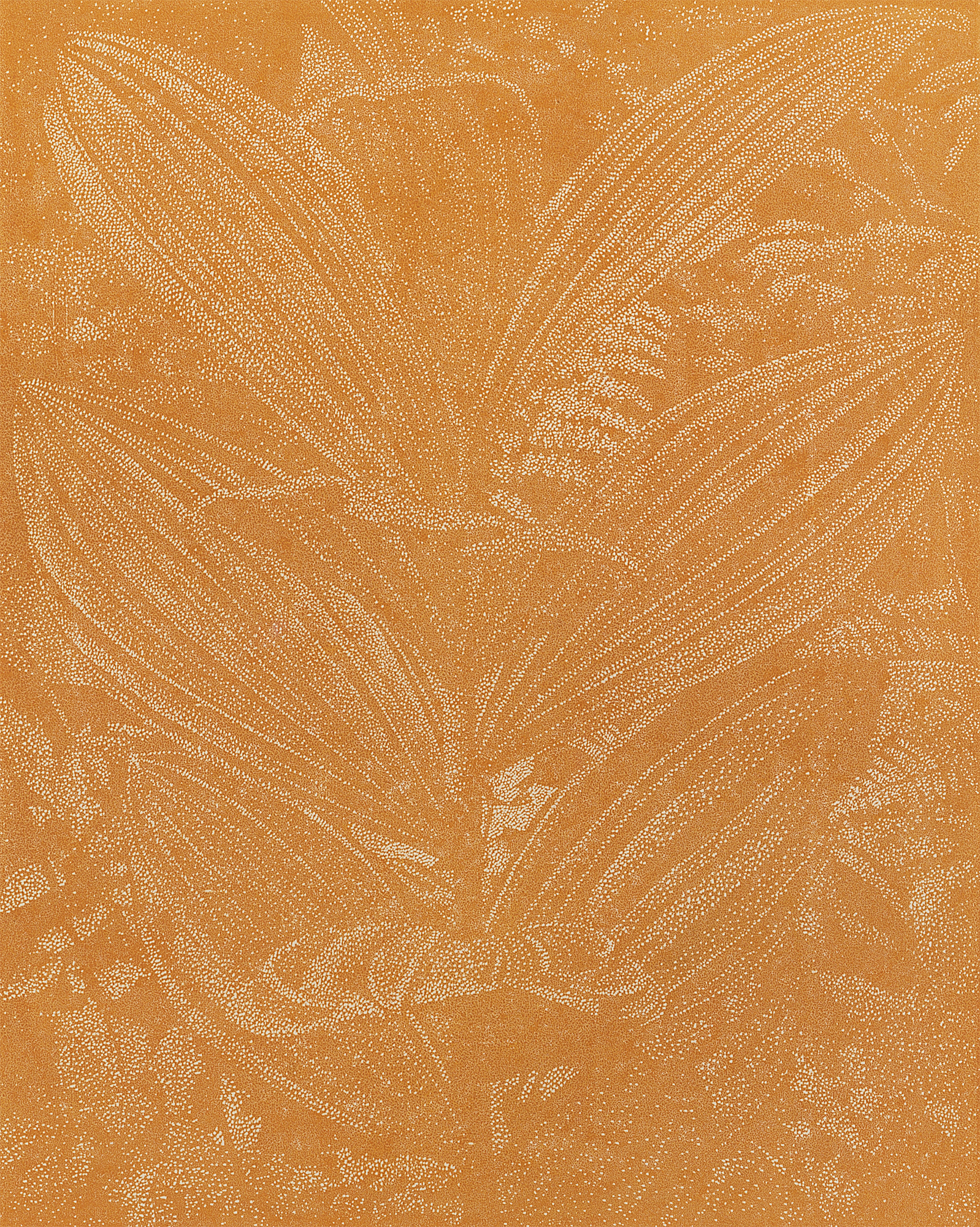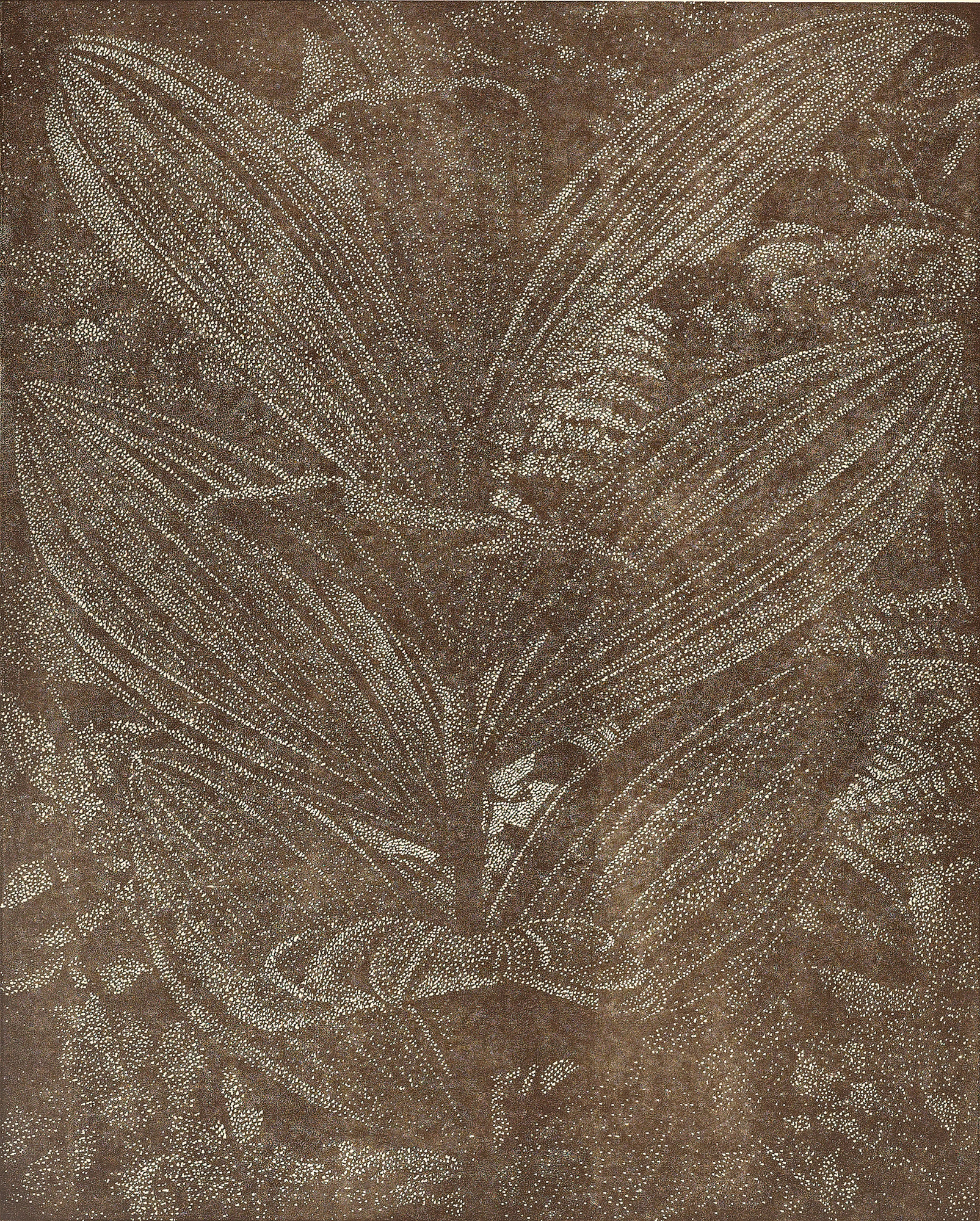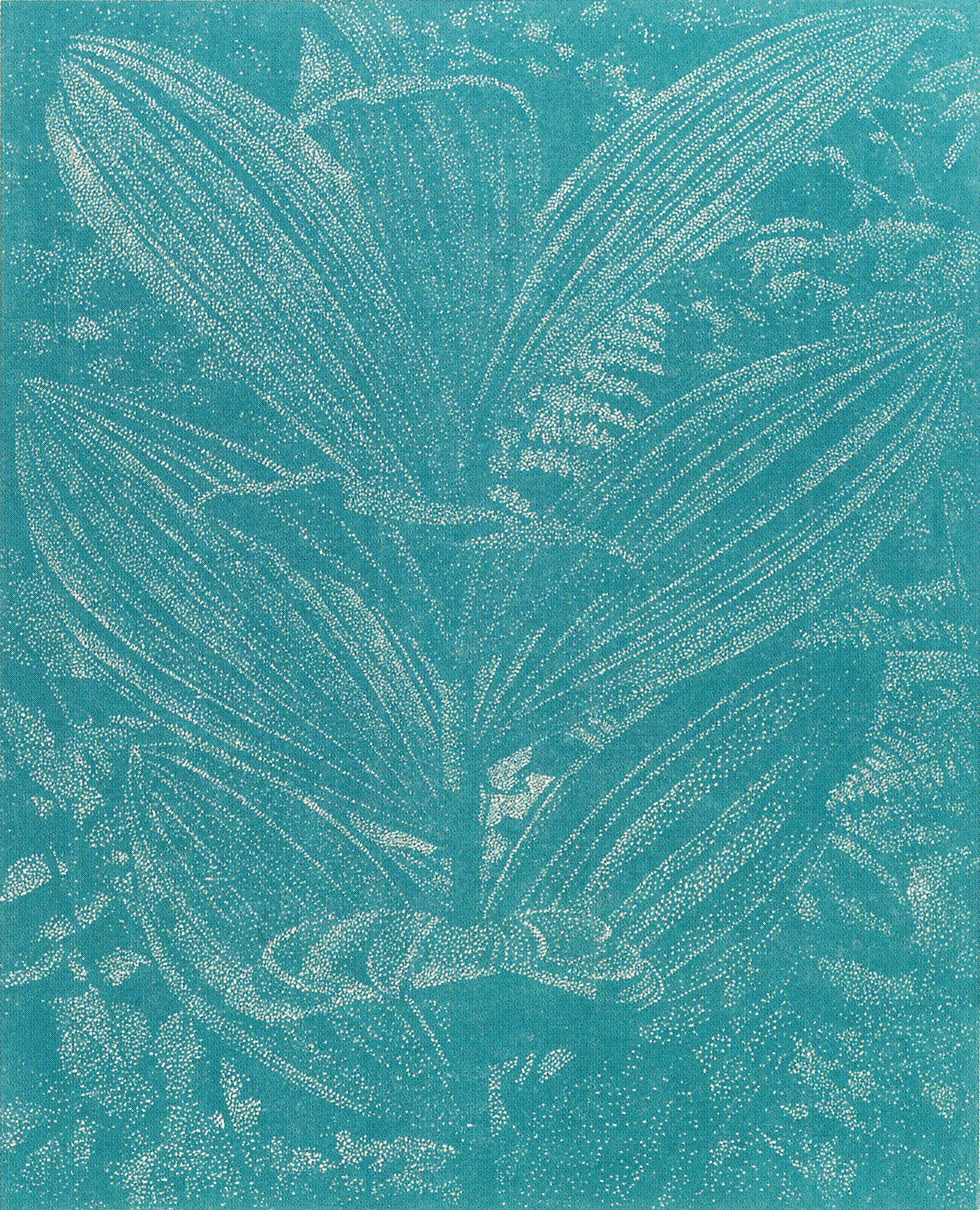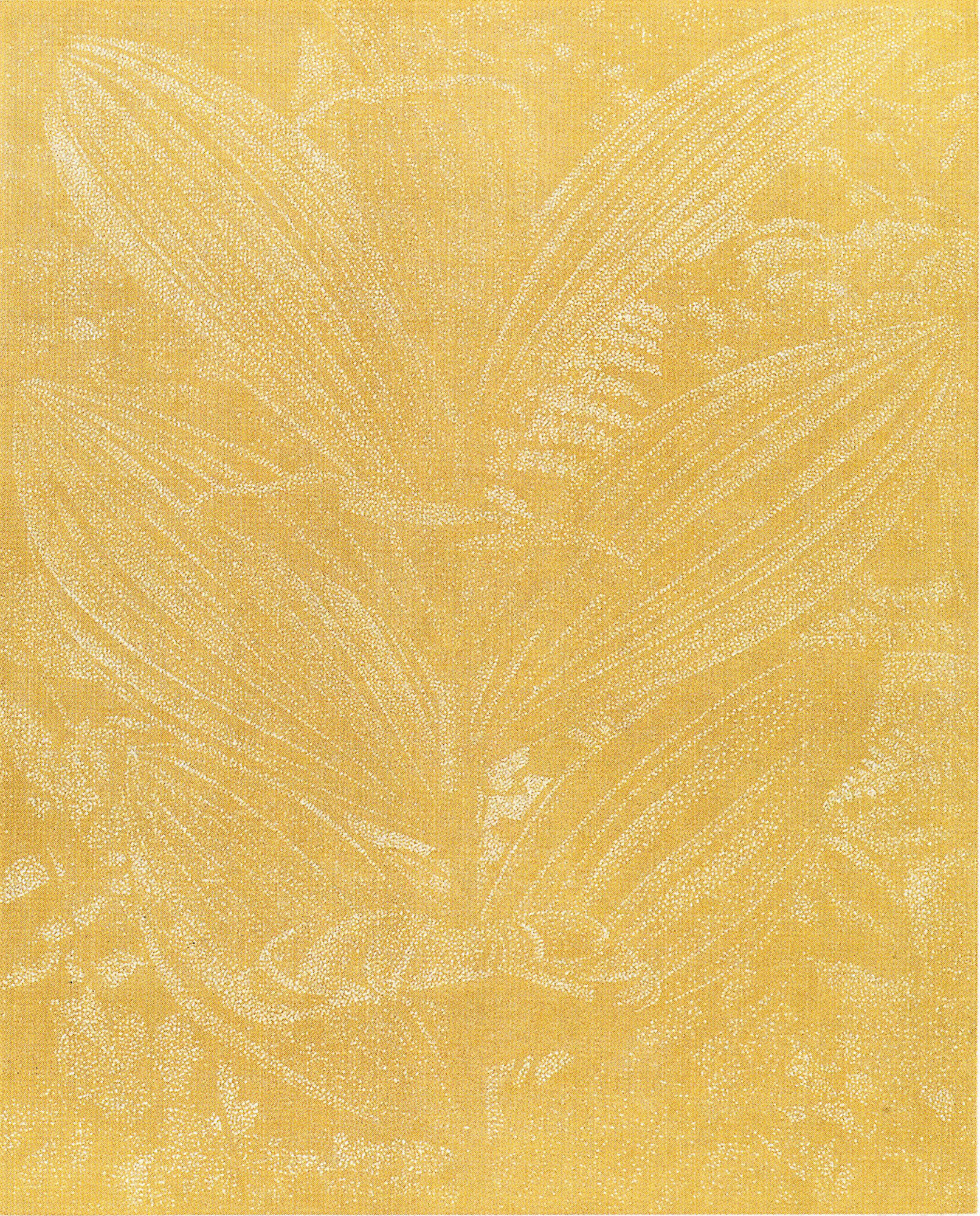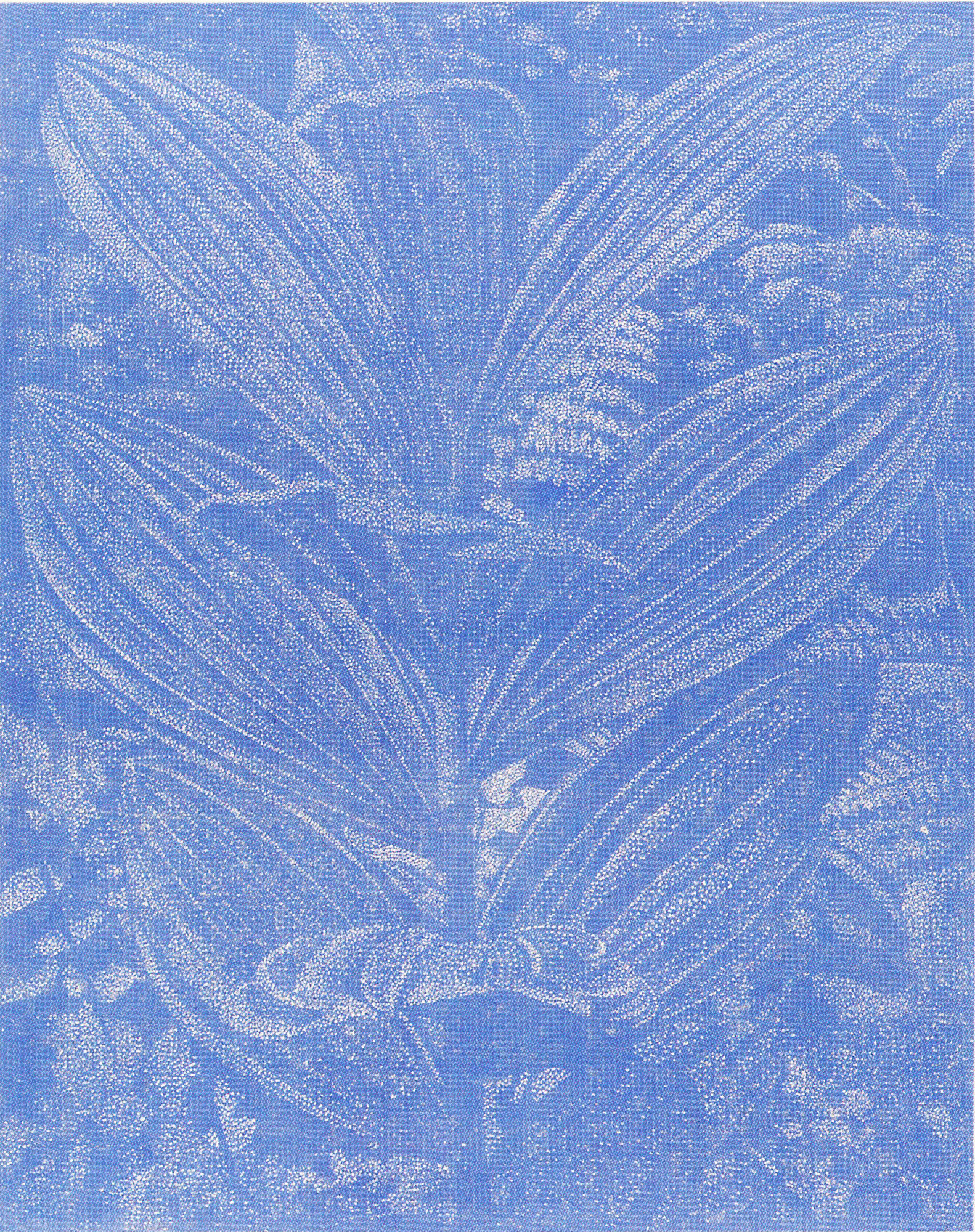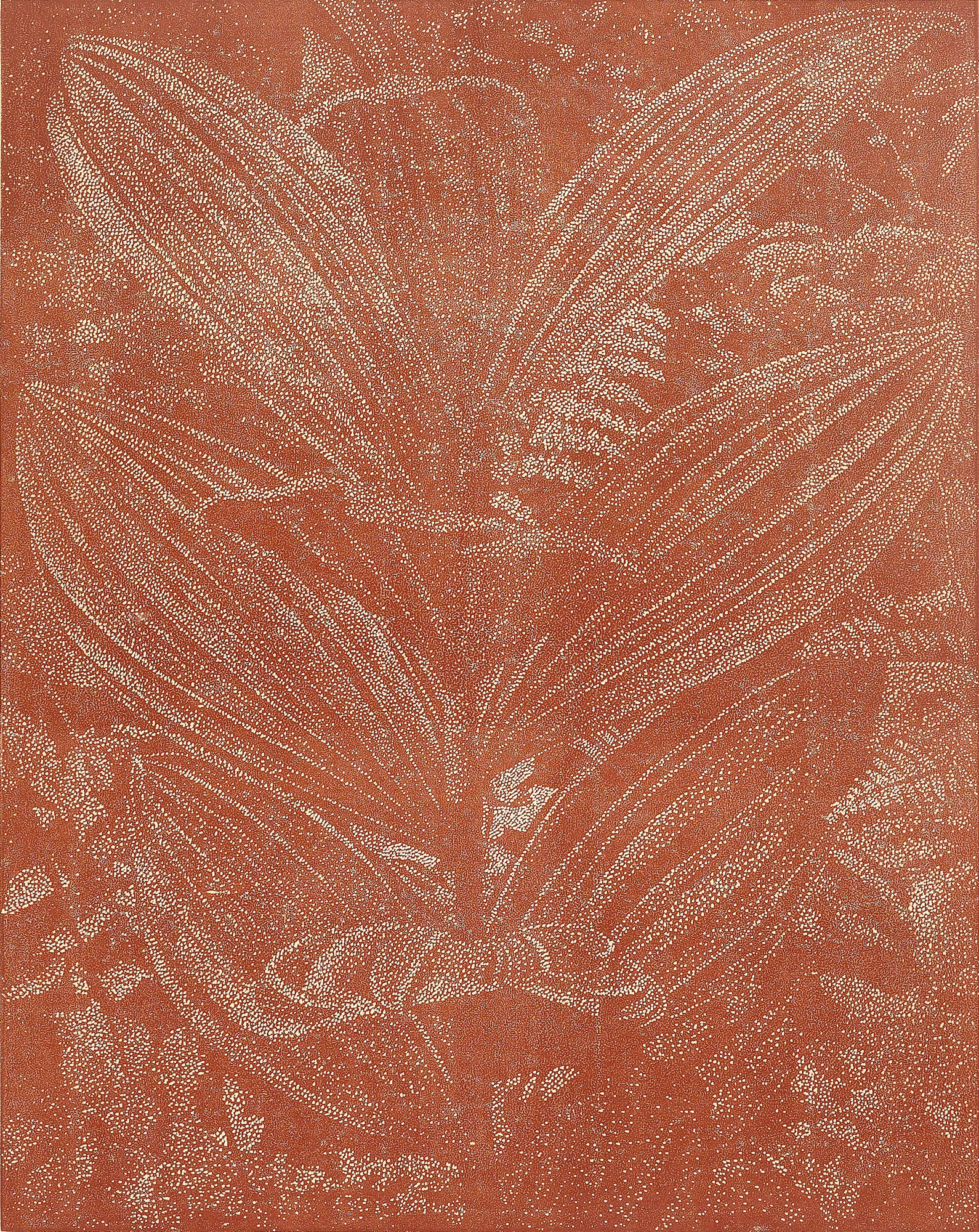After commencing with symbolic and romantic painting, and then passing through a Pop Art phase, Franz Gertsch found his expression in photorealism. He transcended the immobilised instant of photography, gave it life and immortalised it in the same gesture, that of painting. In 1969, when he was already thirty-nine, he settled on the procedures for his work: his painting would use objective reality as a model provided to him by the photographic image projected into darkness. The meticulous depiction of the details, the care taken with the colours and the materials, as well as the slowness of the execution relates his work to that of the Old Masters.
Although the viewpoint adopted and the recourse to a photographic master template placed his practice in a post-photographic aesthetic that inspired, during the same period, American hyperrealist artists, his selection of subjects distanced him from this aesthetic. Instead of the visions of empty cities dear to the American painters, Gertsch favoured contemporary life. Interpreting in his own way the disruptions of consumer society, he invented a form of painting which captured a moment of vivid intensity. In the 1970s, he created portraits of his family and his artistic set, followed by those of the new generation of young artists gathered around Luciano Castelli in Lucerne. The depictions of groups and of real-life scenes filled his huge canvases up until the 1980s.
In 1986, a new chapter began for Gertsch: that of woodcut printing, a technique which led the artist to a slower contemplation of the subject due to the expertise required. Parallel to this ancient process, which he revived with a prodigious virtuosity in monumental-format prints, he took up painting again in 1994, after a long break. A major figure of the international hyperrealist trend, Franz Gertsch has built up an oeuvre which is wholly a reflection on painting and the time necessary for the image to emerge.
Presented at Documenta V in Kassel in 1972 and at the Venice Biennial in 1978 and 1999, his work has been exhibited in many European and American institutions (MoMA, New York; Städelschen Kunstinstitut, Frankfurt am Main; Mumok, Vienna; Kunsthaus, Zurich). It is now part of major public and private collections. In 2002, the Museum Franz Gertsch opened in Burgdorf, in the Bern region.
Although the viewpoint adopted and the recourse to a photographic master template placed his practice in a post-photographic aesthetic that inspired, during the same period, American hyperrealist artists, his selection of subjects distanced him from this aesthetic. Instead of the visions of empty cities dear to the American painters, Gertsch favoured contemporary life. Interpreting in his own way the disruptions of consumer society, he invented a form of painting which captured a moment of vivid intensity. In the 1970s, he created portraits of his family and his artistic set, followed by those of the new generation of young artists gathered around Luciano Castelli in Lucerne. The depictions of groups and of real-life scenes filled his huge canvases up until the 1980s.
In 1986, a new chapter began for Gertsch: that of woodcut printing, a technique which led the artist to a slower contemplation of the subject due to the expertise required. Parallel to this ancient process, which he revived with a prodigious virtuosity in monumental-format prints, he took up painting again in 1994, after a long break. A major figure of the international hyperrealist trend, Franz Gertsch has built up an oeuvre which is wholly a reflection on painting and the time necessary for the image to emerge.
Presented at Documenta V in Kassel in 1972 and at the Venice Biennial in 1978 and 1999, his work has been exhibited in many European and American institutions (MoMA, New York; Städelschen Kunstinstitut, Frankfurt am Main; Mumok, Vienna; Kunsthaus, Zurich). It is now part of major public and private collections. In 2002, the Museum Franz Gertsch opened in Burgdorf, in the Bern region.
